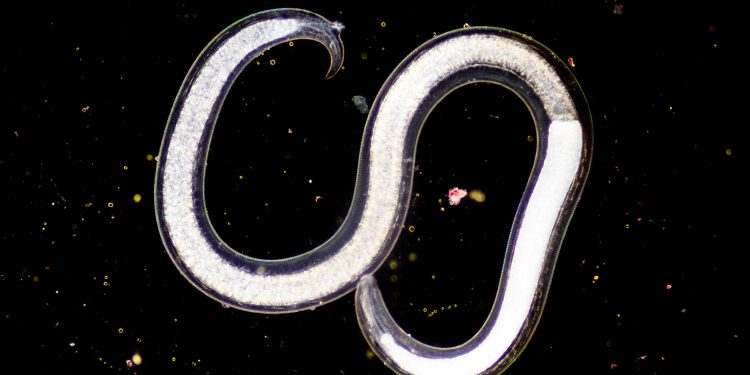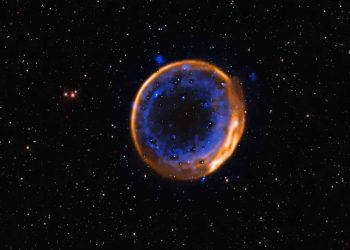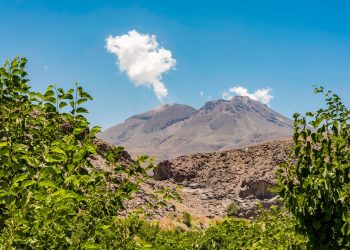In Siberian permafrost, scientists thawed ancient soil and saw tiny nematodes moving around. These animals “woke up” after an extremely long freeze and resumed their vital functions in the laboratory.
Their revival raises clear scientific questions and practical questions. How long did they stay there? What helped them survive? Could the same biology help modern medicine store living material more safely?
The permafrost where the nematodes were found had remained at subzero temperatures since the last ice age. In the laboratory, a simple slight warming brought them back to life.
Know DNA and Age
The team verified that they were nematodes and observed normal behaviors after rehydration and feeding.
Even with DNA barcodes and microscope photos, scientists still couldn’t tell if the permafrost worm was an entirely new species.
Philipp Schiffer – expert in biodiversity genomics at the University of Cologne and co-head of the new Cologne Biodiversity Genomics Center (BioC2) – therefore teamed up with researchers from Dresden.
Together, his group worked to identify the worm’s species and analyze its genome.
Going out with a live animal can damage it or add fresh carbon to it. The researchers therefore dated plant fragments enclosed in the same burrow as the worms.
These fragments were approximately 46,000 years old, placing the discovery in the Late Pleistocene. The layer featured cold, dry, low-oxygen conditions that slowed chemical damage to cells and DNA.
New species with unusual genetics
Through phylogenomic analysis, he and his team were able to define the roundworm as a new species, and the team decided to call it “Panagrolaimus kolymaensis“.
In recognition of the Kolyma River region from which it originated, the nematode was given the Latin name Kolymaensis.
Its genome carries three sets of chromosomes, a condition called triploidy. This often appears in animals that breed without males, and these worms reproduce through parthenogenesis, so a single female can start a new lineage.
The biggest problem isn’t just “how old?” or “what species?” It’s “How did they survive this long?”
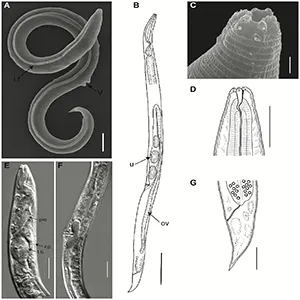
Essay Panagrolaimus kolymaensis
The researchers then tested the resistance P. kolymaensis and I learned that giving the worms some time to dry before freezing helps them prepare for cryptobiosis and survive -80°C.
Permafrost supported the survival of nematodes by keeping temperatures stable, humidity very low and oxygen scarce.
The team compared the genome of Panagrolaimus kolymaensis to that of the well-studied nematode Caenorhabditis elegans and discovered many of the same genes linked to cryptobiosis – a state in which an organism interrupts its life to survive extreme conditions.
Surprisingly, most genes C. elegans uses to enter this state in its larval stage “Dauer” also appeared in Panagrolaimus kolymaensis.
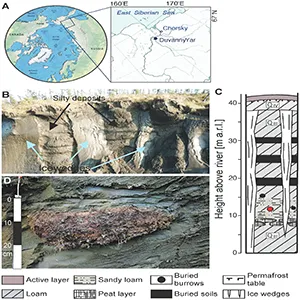
Both species use cryptobiosis
The study also tested a practical method in a modern laboratory worm. Generally, freezing C. elegans without additives it kills them.
Using a two-step approach – drying the Dauer larvae, then freezing them at −80°C – changed the outcome. After 480 days, the dried and then frozen worms came back to life and developed normally.
“Our experimental results also show that Caenorhabditis elegans can remain viable for longer periods in a suspended state than has been previously documented,” explained Vamshidhar Gade, then a doctoral student in the research group.
“Overall, our research demonstrates that nematodes have evolved mechanisms that allow them to preserve life over geological periods.”
In this “pause mode,” both worm species protected themselves with trehalose and other adjustments, which protected cell parts for long periods of time.
Many small organisms can enter cryptobiosis. The molecules stabilize proteins and membranes until conditions improve for resuscitation to occur.
For what Panagrolaimus kolymaensis imported
Understanding trehalose protection and the metabolic preparation that precedes it can improve the way we store living materials.
Better protocols could help preserve cells, tissues for transplantation and seek samples with less risk and fewer chemicals.
The approach of priming organisms and then freezing them at standard temperatures suggests new options for biobanks.
“Our findings are essential for understanding evolutionary processes, because the duration of a generation can vary from a few days to several millennia and because the long-term survival of individuals of a species can lead to the re-emergence of lineages that would otherwise have died out,” concludes Philipp Schiffer.
Lessons from Panagrolaimus kolymaensis
Thawing permafrost in coming years will release long-dormant microbes and animals, such as Panagrolaimus kolymaensisback in modern ecosystems.
Most will be harmless or already familiar in the current environment. Their return is still important because it adds ancient genetic variations and survival strategies to current communities.
This discovery highlights a repeatable program to remain viable over geologic time: reducing activity, converting fats to trehalose, and stabilizing key molecules.
The details differ between species, but the basic strategy remains valid. Biology can take a break for much longer than most of us think.
The full study was published in the journal PLOS Genetics.
—–
Do you like what you read? Subscribe to our newsletter for engaging articles, exclusive content and the latest updates.
Check us out on EarthSnap, a free app brought to you by Eric Ralls and Earth.com.
—–


